#react component library
Explore tagged Tumblr posts
Text
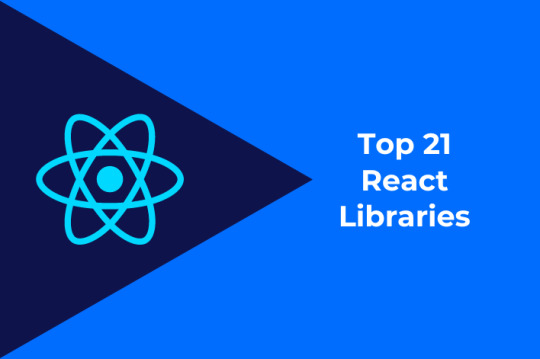
Top 21 React Libraries Which Are Useful to All in 2024 Explore the must-know React libraries for creating top-notch web applications. Upgrade your projects with the latest tools and trends.
0 notes
Text
Developing a React Application using Liferay

The Liferay React Module is a module that allows developers to create React-based web applications within the Liferay platform. React is a popular JavaScript library used for building user interfaces. With the Liferay React Module, developers can leverage the power of React while taking advantage of Liferay’s features, such as user authentication, content management, and workflow management.
The Liferay React Module provides a set of tools and components that developers can use to build their applications. It includes a React component library, which provides pre-built UI components that can be used to create web pages and interfaces. It also includes a development environment that allows developers to create, test, and debug their React applications within Liferay.
Creating React Module Using Liferay module
Right click on the Liferay workspace go to New -> module
Choose Liferay Modules and click on next

3.Give the module name and select npm-react-portlet

4.Click on next and give the package name 5.Click on create

6.Now, React module is successfully created using Liferay module.
Creating React Module Using Liferay JS Generator
1.Using npm, install the Liferay JS Generator:

2.Generate a React based portlet bundle project for deploying your app to your Liferay DXP installation.

3.After that give the answer of some questions and react app is ready to deploy

We are able to deploy the react module using the npm run deploy
To Display the react module widget
Create Widget page.
Click on plus icon
Search for DemoReactModule
Drag it and Drop into Page.
Now You are able see the react module.
Conclusion:
In conclusion, the Liferay React module can be a useful tool for developers building applications with Liferay who want to take advantage of React’s benefits. However, the usefulness of the module will depend on the specific needs and goals of the project, as well as the skills and preferences of the development team.
Originally published by: React Application using Liferay
#React component tool#React component library#React applications#Liferay React Module#Liferay DXP#React module using liferay
0 notes
Text
Top 11 React Carousel Libraries for Stunning UI/UX!

Improve your next web development project with the best React Carousel Component Libraries. Improve user experience with dynamic, interactive carousels tailored to your needs. Get expert guidance to choose the perfect library for your project!
#react carousel#React Carousel Component#react carousel library#reactjs carousel#carousel for react#Carousel Components#carousel react js#react slider carousel
1 note
·
View note
Text
0 notes
Text
Unleash the Potential of React Native in 2023: Dive Deep into the Best Component Libraries!
Stay at the forefront of mobile app development with our comprehensive guide to the top React Native component libraries.
1 note
·
View note
Text
Editing Part 4: Worldbuilding Pass
Next up, worldbuilding! We're tackling this before structure, because you don't want to get too far into the weeds, realize a critical component of your story is wrong, and then throw your computer out the window in frustration.
Anyway, when it comes to worldbuilding, there's a lot of moving parts. There is no right or wrong way to worldbuild, but my preferred approach is to worldbuild as the story goes along. Any method works, and you can check out the worldbuilding tag for more. In editing your worldbuilding, you want to think about:
Trimming Front-loading/Info Dumps
When writing fantasy/sci-fi, getting down how the world works can take over the story. In first drafting, this is fine! But when you're trying to clean that draft up, it's better to weave this information in as you go.
Need to explain how the giant mechas guarding the city operate? Maybe your main character is trying to steal some precious alloy from one, giving you opportunity to explain how they work and how society feels about them. Have a magic system that relies on singing tunes? Show that off by having students practicing, or dueling rivals taking it too far.
You probably know by now that the thing you should avoid the most is "as you know" dialogue dumps - characters explaining concepts to each other that they both clearly understand. Another, weaker version of this is the "magic class" trap, where things are explained to the main character and the reader. A classroom environment is fine, but pair worldbuilding with action - demonstrations get out of hand, spells go wrong, etc. Make it fun!
Your World Needs Clear Rules (Sorry)
Listen, this is the part I hate. I have a WIP with the word "Rules" in the title and I'm still figuring out what those rules are. Argh. But the sooner you know the rules, the easier editing will be. The more clear those rules are to the reader, the more impactful breaking them will be.
If the rules of the world (you can't use warp speed too close to a planet's gravitational pull, the same type of magic cancels each other out) and the consequences of breaking them are clear, the pay-off will be satisfying for both you and the reader.
Use Your Environment to Your Full Advantage
You've no doubt heard 'make setting a character' and that's evergreen advice. Some of the best books out there are those where it feels like you could step through the page and into a real place, be it your childhood middle school or Narnia. Getting that feeling, however, is more than just describing a place really well.
Mood - How does the location make you feel? Does a dark, cramped room leave the characters with a feeling of dread? How would that feeling change if it was an overstuffed library with comfortable chairs?
Weather - Beyond the 'dark and stormy night' descriptions, weather impacts our daily lives and is often overlooked. A rain-drenched funeral scenes seems like it's the way to go, but how differently would that scene feel if it was a sunny day with birds singing?
City Versus Countryside - These books are a great reference for description, but also take a step back to compare how different situations would feel both in the setting and to your character. Quiet can mean very different things depending on where you are. A morning fog in the countryside might feel comforting to someone used to it, but to someone new to that environment, it might feel creepy. Think about both your environment and how your character reacts to it based on their backstory.
The Empty Room Problem
This is always a big challenge when moving from the first draft bare bones basics to fleshing things out. How much description is too much? (As a note, it's always okay to overcorrect - you'll have a chance to fix it later!) This post from @novlr has a lot of great questions - but you're still going to narrow it down to the most important details.
Escape the Movie Setting - You cannot describe the room like it's a movie set. Trying to do so is going to be overwhelming, and important details will be lost in the attempt. If you were to describe your room or your favorite coffee shop and could only highlight four or five details, what would you focus on? What gives the reader the essence of the place rather than a list of things that exist there?
Establish the Essentials - Is this your first character's first time in this room? Is it going to be key to several plot-important scenes? Some big, sweeping details when entering - how big it is, what's in it, where the windows are, how it feels, etc - are good to start with. Your character can briefly admire a full bookshelf in the first scene, and then study it in more detail in the second. If you have one scene in this place and spend too much time describing it, you're going to make your reader think it's more important than it is.
Engage the Senses - Does an old room smell musty? Does the coldness of the woods have a sharp taste? Does touching a shelf bring up a lot of dust? How does the lighting in the room make the main character feel?
Getting down the description of a room or setting is not something you'll nail in one shot, but if you approach each scene asking yourself "does this feel like a real place or a white room?" you can narrow down what's missing.
151 notes
·
View notes
Note
With your baby Riz fic being a thing I’m curious how the party would react to other party members being swapped.
Fabian gets swapped, the four year old version of himself is UTTERLY perplexed and just assumes the entire thing is a dream. Immediatly becomes besties with Riz because they're the same height and the party takes him on a fun trip through Elmville to places like the arcade and movies while Ayda prepares the reversal spell. Fabian LOVES it, he barely ever gets to do stuff like this because he's been out to sea with his dad for as long as he can remember. He doesn't remember it when he grows up though, he was pretty young and people dont often remember things from when they were that small.
Teenage Fabian had a harder time in the past though, because Bills darling boy DISAPPEARED and was replaced by some fool who would dare kidnap his son. It took a lot of persasion, and a very intense duel, for him to convince Bill he was his son from the future (the fact he has his dads eyepatch was the clincher).
----------------
Gorgug swapped places with himself and the four year old version of himself just sits and reads in the library for a while. He doesnt say a single word and is an incredibly calm kid. The rest of the party are honestly a bit worried about him.
Teenage Gorgug appears in the middle of his living room and surprises the shit out of Wilma and Digby but they roll with it immediatly. Yup this is DEFINITELY their darling son, just a bit older, so they have what is basically a normal afternoon in their house and have tea and biscuits.
---------------
Young kristen is SO very confused and is crying the entire time because she just appeared in a room full of the kinds of people her parents told her are bad. There's even a GOBLIN there and they're nasty and bite people and are diseased right? Riz is a little offended honestly.
Adult Kristen appears in the middle of the church service and people are touting it as a miracle. She has a very awkward few hours just smiling and nodding along as people ask her to lead them in prayers to a god she no longer follows.
---------------
Baby Adaine is awestruck by the library when she arrives, and Ayda, and all the magic books. She gets a little tour of the library and picks out a few books to read which she thoroughly enjoys. Ayda, while waiting for some components to be ready, even teaches her some simple spells which is what sets her on her path to being a practical caster in the future.
No one even noticed teenage Adaine appearing in the past. She literally had free-run of her childhood bedroom because her neglectful parents never checked on her. She ended up stealing a few items that had sentimental value that she remembers vanished mysteriously when she was small.
----------------
A young Fig appears in the compass point library and Ayda is BESOTTED. Many a photo is taken. Young Fig is equally awestruck by the pretty lady. She does end up wandering out of the library to go explore, but its WAY easier to track her down than it was to find Riz. They find her sitting in a bar just down the street thirty minutes after she disappeared listening to a band playing pirate music with her mouth hanging open.
Teenage Fig appears next to Gilear while he's out shopping for groceries with her. Through a series of comedic mishaps he manages to not notice at all that his daughter is suddenly much older than she should be and also an archdevil. She manages to sneak away at one point to try and find Riz so she can snap photos of him as a baby. She nearly gets caught by Pok whos perception is good enough to notice her snapping photos from across the street on crystal. He ends up abandoning his plans to go to the park and takes Riz home instead.
#fantasy high#riz gukgak#bad kids#fig faeth#fabian seacaster#gorgug thistlespring#adaine abernant#kristen applebees
33 notes
·
View notes
Text
Book review: Cattywampus
Our pick for July 2024 was Cattywampus, a children’s novel featuring a main character with AIS (published 2020). The story focuses on two young witches, Katybird (intersex) and Delpha (perisex) as they come of age and develop their magic powers. Katybird being intersex is relevant to the plot as the magic system in the book has a gendered component.
Overall impressions:
Elizabeth: it was a fun little adventure that handled the AIS part very well. I was underwhelmed about it turning into a zombie story, but I still enjoyed the book and felt it advanced intersex representation.
Bnuuy: I thought it was pretty good, could imagine myself reading and liking it when young. It was a fast read and I think it would be a great book for school libraries.
Emily: I didn’t finish it, but middle grades aren’t my cup of tea. But I think I also would have liked it if I’d read it when I was that age.
Michelle: the AIS felt a little shoehorned in terms of terminology, but lots of great casual representation. Very charming, loved the dialect and representation particularly. The class and socioeconomic issues were depicted particularly well. Great, strong characters.
Remy: I liked how much more chill this book was about AIS compared to Across the Green Grass Fields! It also has me thinking about two other stories. Demon Copperhead by Barbara kingsolver for Appalachian rep, and Muted (a webtoons comic), about magic families that magic also gets passed down matriarchally.
The intersex representation
Emily found it jarring that there was medical jargon in a book whose tone tries to be very folksy, and Michelle agreed that it stuck out. However, Elizabeth felt the language is realistic: people who are diagnosed young often understand ourselves through medicalized language at that age.
We talked about how the book had to explain so much about intersex because of how little the general public knows, and it would be nice if not so much exposition is necessary - but we all understood the need for it.
Elizabeth liked how the book teaches people that intersex (and disabled) people do not generally want pity. The book highlights how Katybird was uncomfortable with people at school praying for her, how it was unwanted and actually hurt her.
Bnuuy liked how the book included intersex representation in a way that mattered to the story, but it wasn’t a book specifically about being intersex. The intersex themes integrated well with the other themes (coming of age, disability, etc).
Bnuuy pointed out out that when Katy gets control of her magic, she is identifying with poison ivy. Other books we’ve read in this book club have drawn a connection between being intersex and plants, and it was neat to see that theme emerge here!
Remy liked how Katy was more chill about having AIS than the character Regan from Across the Green Grass Fields. Cattywampus was just a whole lot more chill about AIS. Bnuuy pointed out that it was unusual how chill Katy’s family was about her having AIS, but that it’s important for children who are intersex to have this frame of reference of how they should be treated.
Elizabeth added that it’s also a good example for parents. The book mentions how Katy’s mom was described as doing her own research on AIS and speaking to people from intersex organizations at length before telling doctors: “no surgery for my child”.
Early in the book, Katy remembers going to a “moon party” where girls were talking about their first period stories. Katy casually shared that doesn’t happen for her, not seeing anything wrong with it. And it became a negative experience because of how the others reacted with horror and pity. Elizabeth could relate - not to this specific experience but to the sort of experiential disconnect.
What else we liked
The plot is driven by a spell which goes wrong, and Remy liked that the solution to the spell problem was not “try harder” as that is a common trope in stories where magic is tied to emotions.
Bnuuy liked how Katy’s family and Delpha’s family had different approaches to deal with the social ban on doing magic in public. Katy’s family did magic in secret, whereas Delpha’s mother had a policy of “we never do magic”. Both characters felt shame about their magical abilities: Katy faces deep anxiety about her magic puberty powers awakening not happening the way it is "supposed" to, whereas Delpha feels shame for wanting to use the powers at all. While Delpha’s mother meant well, the total ban on magic created stigma for Delpha that actively contributed to her not asking for help.
Elizabeth appreciated how the book reminded zer the extent to which children do what they think adults want them to do. A reason the main characters’ problems escalated was every time they tried to ask for help from adults, the adults implied they didn’t want the kids doing magic, and so the girls each lied and told the adults what they thought the adults wanted to hear.
Bnuuy liked how the preacher’s wife was actually cool with magic/difference and a useful ally to the kids - nice to see a positive Christian representation. Bnuuy also liked how the geographic location felt connected to the spell that the preacher’s wife helped the kids with.
Bnuuy pointed out the Deaf representation was also good. We all liked seeing an example of a family putting in the effort to learn ASL for their Deaf child. (We then wound up on a tangent about Plains Indian Sign Language, the lingua franca of most of North America before European hegemony.)
What we struggled with
Elizabeth felt uneasy about how the Appalachian history was presented as “a bunch of Celtic people were here for hundreds of years” and wanted the bare minimum of acknowledgement that this is Native land and these families were not the only people in the area who had roots there. Ze didn’t feel a Native character was necessary, just that the depiction of the regional history included the relevant Nation(s) for the setting (Muscogee? Cherokee? Shawnee?).
Remy was concerned the (audio)book presented a classist/racist depiction of Appalachian people in the audiobook. The author of the book is from Appalachia, so most of us are inclined to believe this is done with sensitivity. Most of us are not from (or live in) the USA, and most folks felt unable to assess this. Elizabeth found some of the dialectal choices to be confusing, but accepted that ze was not necessarily the audience and there is value in books featuring dialects/registers other than Standard English.
The character Delpha starts the book without a father in her life, and yearns for one. Michelle was disappointed that Delpha’s biological dad came back. Xe had hoped that the Dad character would be a father figure, and she’d build a new family. Xe felt it would be more productive to have a positive representation of healthy step-parents and/or non-nuclear families than how the book instead resolved Delpha’s desire for a father by having her biological father return.
We all agreed that it was weird that Katy’s 6-year-old Deaf brother was so comfortable with an unplanned sleep over at a new house with an adult that they seemed only vaguely acquainted with.
Mixed reactions
Remy felt the small town attempt didn’t land: everyone knows everyone but they’re also big enough for tourists? Elizabeth has spent time in small towns that are tourist destinations so that felt plausible to zem. The actual geography of the area was confusing for a lot of us, and how long it took for various characters to arrive at different destinations. A map would have probably helped a lot.
Michelle would have liked Katy and Delpha to couple up because they had good chemistry, and would add to the queer rep. Elizabeth disagreed, and personally wants less romance and coupling in children’s literature - feels like there’s already too much cultural pressure for kids to form romantic bonds.
The maturity of the characters prompted mixed thoughts. Remy brought up a feeling that the main characters didn’t act like they were 12. We talked about how maturity in kids isn’t so much a consistent thing: development doesn’t mean somebody is always “acting 12” but might act like they’re 6 at one thing and act 14 at another. It’s a challenge for writers to pull off realistic children.
Elizabeth had mixed feelings about how neither family had done basic magic safety training, which seemed like a kind of obvious thing to have done. But the plot required that to not happen, so was resigned that it was a suspension of disbelief thing. Elizabeth was confused that the kids didn’t go to the preacher’s wife for more help after she was established as a trustworthy adult.
Delpha is revealed to be part Yow. Remy hoped that the Yow thing isn’t a male-specific thing, and was concerned this would undermine the intersex rep.
What we would want in a sequel
Bnuuy posed a fun and constructive question: what would we want to see in a sequel?
Remy would like a character who is both Yow and Witch
Elizabeth wants to see if Delpha’s mother has had character development
Bnuuy suggested one or more Native characters
Remy suggested a third magic family that finds it odd that Katy’s family and Delpha’s family have a gendered pattern to who is magical.
Elizabeth thinks it would be fun if it turns out all genders had magic ability and just nobody thought to train the men. Remy added: “ooh yes and they just repressed it with their feelings!”
Michelle pointed out there was already a hint of that in the text. Bnuuy pointed out the possibility that the magic maybe wasn’t genetic so much as the sharing of knowledge and training, and this aspect of how it works just got lost over the generations.
Remy would like adopted character(s) who can do magic.
Overall, this was a fun romp suitable for the middle grade (age 8-12) audience that may be enjoyable for folks of older ages. The book handles the AIS representation in a way that is productive and educational while also feeling integrated with the plot. We’d definitely recommend this one for parents reading to their kids!
#intersex book club#intersex books#intersex#actually intersex#intersex literature#intersex fiction#queer books#queer fiction#book club#book reviews#book review#book summaries#book summary
13 notes
·
View notes
Text
Thank you guys for all the kind words on my map project thingy!! You have no idea how much it means to me. My mission to create a weird, neat piece of internet archeology is achieved :)
Regarding how it was created - it's custom. I'm a software engineer in real life and doing this sort of thing is my existence and my favorite thing ever. Tools used were
Astro, the framework holding the site together and dealing with all the markdown
React and Jotai for components and all the nitty gritty logic
react-zoom-pan-pinch: library for... you guessed it zoom pan pinch
way too much SCSS for styling and I should really start messing more with tailwind
38 notes
·
View notes
Text
Mini React.js Tips #2 | Resources ✨
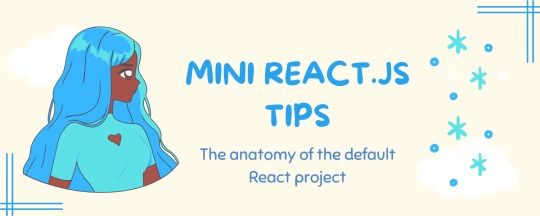
Continuing the #mini react tips series, it's time to understand what is going on with the folders and files in the default React project - they can be a bit confusing as to what folder/file does what~!
What you'll need:
know how to create a React project >> click
already taken a look around the files and folders themselves

What does the file structure look like?
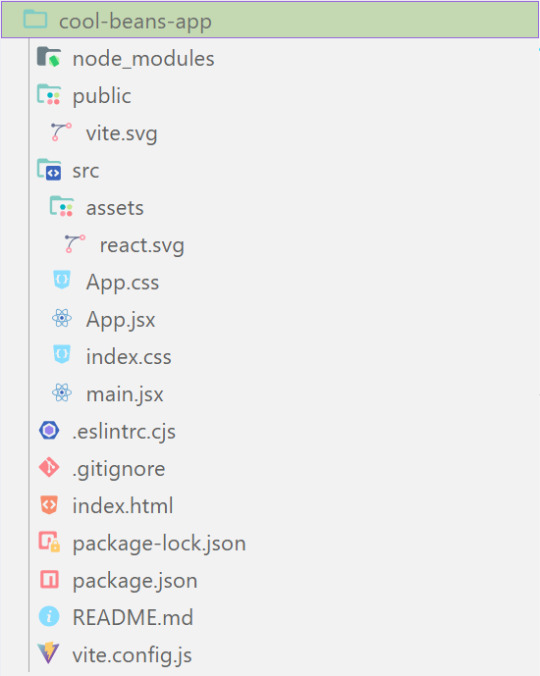

✤ node_modules folder: contains all the dependencies and packages (tools, resources, code, or software libraries created by others) needed for your project to run properly! These dependencies are usually managed by a package manager, such as npm (Node Package Manager)!
✤ public folder: Holds static assets (files that don't change dynamically and remain fixed) that don't require any special processing before using them! These assets are things like images, icons, or files that can be used directly without going through any additional steps.

✤ src folder: This is where your main source code resides. 'src' is short for source.
✤ assets folder: This folder stores static assets such as images, logos, and similar files. This folder is handy for organizing and accessing these non-changing elements in your project.
✤ App.css: This file contains styles specific to the App component (we will learn what 'components' are in React in the next tips post~!).
✤ App.jsx: This is the main component of your React application. It's where you define the structure and behavior of your app. The .jsx extension means the file uses a mixture of both HTML and JavaScript - open the file and see for yourself~!
✤ index.css: This file contains global styles that apply to the entire project. Any styles defined in this file will be applied universally across different parts of your project, providing a consistent look and feel.
✤ main.jsx: This is the entry point of your application! In this file, the React app is rendered, meaning it's the starting point where the React components are translated into the actual HTML elements displayed in the browser. Would recommend not to delete as a beginner!!

✤ .eslintrc.cjs: This file is the ESLint configuration. ESLint (one of the dependencies installed) is a tool that helps maintain coding standards and identifies common errors in your code. This configuration file contains rules and settings that define how ESLint should analyze and check your code.
✤ .gitignore: This file specifies which files and folders should be ignored by Git when version-controlling your project. It helps to avoid committing unnecessary files. The node_modules folder is typically ignored.
✤ index.html: This is the main HTML file that serves as the entry point for your React application. It includes the necessary scripts and links to load your app.
✤ package.json: A metadata file for your project. It includes essential information about the project, such as its name, version, description, and configuration details. Also, it holds a list of dependencies needed for the project to run - when someone else has the project on their local machine and wants to set it up, they can use the information in the file to install all the listed dependencies via npm install.
✤ package-lock.json: This file's purpose is to lock down and record the exact versions of each installed dependency/package in your project. This ensures consistency across different environments when other developers or systems install the dependencies.
✤ README.md: This file typically contains information about your project, including how to set it up, use it, and any other relevant details.
✤ vite.config.js: This file contains the configuration settings for Vite, the build tool used for this React project. It may include options for development and production builds, plugins, and other build-related configurations.

Congratulations! You know what the default folders and files do! Have a play around and familiarise yourself with them~!
BroCode’s 'React Full Course for Free’ 2024 >> click
React Official Website >> click
React's JSX >> click
The basics of Package.json >> click
Previous Tip: Tip #1 Creating The Default React Project >> click
Stay tuned for the other posts I will make on this series #mini react tips~!
#mini react tips#my resources#resources#codeblr#coding#progblr#programming#studyblr#studying#javascript#react.js#reactjs#coding tips#coding resources
25 notes
·
View notes
Note
Awww, Sydney will be excited about the baby whether faithful or fallen. Comedi-Anne posted about the angst potential of Sydney pregnancy content because Sirris would have been a teenager when Sydney was born. It’s nice to see that no matter what other feelings Sydney may have about the pregnancy, that Sydney is excited.
when I tell you that i am so excited for Sydney's pregnancy content in particular....
so many avenues to explore... the Sirris component as you mention, Sydney's conflict about being unwed (but it warring with his joy too), the Temple's reaction, how he'll react to people pestering you (in the library, in the temple, in the store) while you are carrying his child. whew.
I can imagine it's really complicated to write out all the different aspects!
23 notes
·
View notes
Text
WebDev Q&A Highlights
Good news: we're getting better at using Twitch! This means we're starting to publish more digestible highlights of our streams for people who want to get straight to the goods. Here's the ones from last stream's WebDev Q&A:
Astro components vs React components
What is Vite (& Rollup)
Package Managers vs CDNs vs copy-and-paste JS libraries
Websockets vs HTTP requests
Some favorite JS libraries
Some favorite VSCode extensions
And from the last last stream (forms and payments):
Forms (in general, but especially in Astro)
Taking payments with Stripe and Paypal
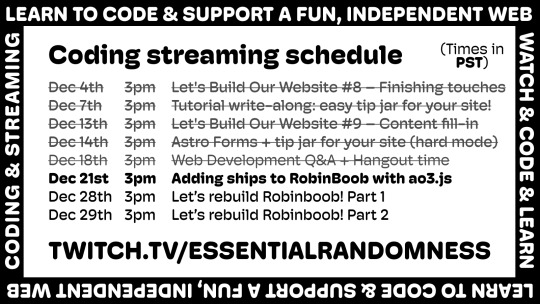
See you tomorrow on Twitch at 3PM PST with our next stream: using ao3.js to add new characters to RobinBoob, our one and only Ships marketplace.
21 notes
·
View notes
Text
What is Mern stack And Its importance? Before that I will Tell you the best institute for Mern stack course in Chandigarh.

What is Mern stack?
MERN Stack is a popular JavaScript-based technology stack used for building full-stack web applications. It consists of four key technologies:
MongoDB: A NoSQL database that stores data in a flexible, JSON-like format.
Express.js: A lightweight and fast backend framework for Node.js.
React.js: A front-end JavaScript library for building user interfaces.
Node.js: A runtime environment that allows JavaScript to run on the server side.
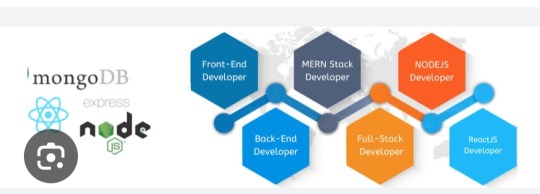
Importance of Mern Stack :
Full-Stack JavaScript – Uses JavaScript for frontend and backend, simplifying development.
High Performance – Node.js ensures fast, scalable applications.
Cost-Effective – Open-source, reducing development costs.
Rapid Development – React’s reusable components speed up UI building.
Flexibility – Suitable for web apps, SPAs, eCommerce, and real-time applications.
Scalability – MongoDB handles large data efficiently.
Strong Community Support – Large developer base ensures continuous updates and support.
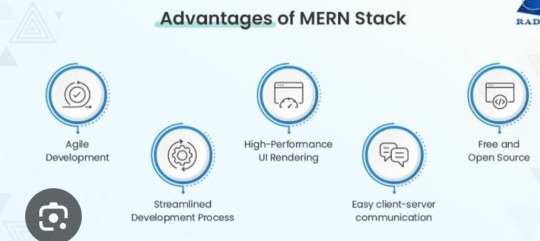
Now i will tell you the best institute for Mern stack course in Chandigarh .

Excellence Technology is a leading EdTech (Educational technology) company dedicated to empowering individuals with cutting -edge IT skills and bridging the gap between education and industry demands. Specializing in IT training ,carrer development, and placement assistance ,the company equipts learners with the technical expertise and practical experience needed to thrive in today's competitive tech landscape. We provide IT courses like python ,Full stack Development, Web Design ,Graphic Design and Digital Marketing.
Contact Us for more details: 93177-88822

Extech Digital is a leading software development company dedicated to empowering individuals with cutting -edge IT skills and bridging the gap between education and industry demands. Specializing in IT training ,carrer development, and placement assistance ,the company equipt learners with the technical expertise and practical experience needed to thrive in today's competitive tech landscape. e provide IT courses like Python ,Full stack Development, Web Design ,Graphic Design and Digital Marketing.
Contact Us for more details: 93177-88822

Excellence academy is a leading software development company dedicated to empowering individual with cutting edge IT skills and bridging the gap between education and industry demands.specializing in IT training, career development, and placement assistance, the company equits learners with the technical expertise and practical experience needed to thrive in today's landscape. We provide IT courses like python, full stack development,Web design, and Digital marketing.
Contact Us for more details: 93177-88822
About Author
Nikita Thakur
Mern stack AI Developer/ 2+ years of experience
Excellence technology
Professional summary
Nikita thakur is a skilled MERN Stack AI Developer with over 2 years of experience at Excellence Technology. Proficient in MongoDB, Express.js, React.js, and Node.js, she integrates AI solutions to build scalable, high-performance web applications. Nikita excels in developing innovative solutions, enhancing user experiences, and driving business growth through technology.
2 notes
·
View notes
Text
Component Libraries: Should You Build Your Own or Use a Prebuilt One?

Component libraries are a vital tool in web application development in maintaining uniform design, shortening the time taken to develop web applications and improving reusability of the code. Some developers find this dilemma; should they create a component library or use an existing one? In addition, they help reduce the struggle while building well-designed and interactive websites because of the availability of animation-oriented UIs such as Accentricity UI among others. Now, let’s get more to the point in order to help you find the right way.
What is a Component Library?
Component libraries are collections of reusable UI elements such as buttons, forms, modals, and more— and are intended to reuse the components across several projects. Such libraries not only guarantee a consistent look of an application but also save time and costs during its implementation because the elements have been already coded. So, there's no need to build components from scratch.
Prebuilt Component Libraries

Prebuilt Component Libraries
Prebuilt component libraries are the ready-made collections of different UI components that are specifically designed and optimized for common use cases that developers can face during development. Some well-known examples include:
Material-UI (MUI):
A library based on React and it follows Google's Material-UI design, MUI allows a comprehensive set of components customization.
Ant Design:
It's an UI design system framework for enterprise-level products, ant design offers built-in themes and a rich set of UI components.
Bootstrap:
It's an widely-used CSS framework that provides basic components and a responsive grid system.
Pros of Prebuilt Libraries :
Rapid Development: Prebuilt libraries save a lot of time of the developers by providing pre-designed reusable components that you can quickly integrate into your project.
Standardized Design: They help ensure a consistent user experience across different screens and features.
Community Support: Many prebuilt libraries come with robust community support, providing a wealth of tutorials, plugins, and enhancements.
Cons of Prebuilt Libraries
Limited Customization: Customizing components to fit your unique design can sometimes be difficult, leading to constraints on flexibility.
Performance Overhead: Many prebuilt libraries come with extra features you may not need, which can bloat your codebase.

Pros And Cons of Prebuilt Libraries
Animation-Centric Libraries: Bringing UIs to Life
In recent years, a new category of libraries has emerged, specifically focused on providing built-in animations and smooth UI transitions. These libraries not only offer pre-designed components but also emphasize adding dynamic, interactive features to web applications.
Here are some popular examples of animation-focused libraries:
Lottie
Category: Animation Integration Library

Lottie:The industry standard for motion design
What it Offers: Lottie allows you to render animations created in Figma or Adobe After Effects as JSON files using the built-in plugins. These animations are then rendered natively on the web, offering high-quality motion without a heavy performance impact.
Why It’s Useful: Lottie is perfect for apps or websites requiring rich, scalable animations that are lightweight. It’s commonly used for logos, loading animations, and subtle UI effects. Unlike other component libraries, it focuses purely on bringing visual design elements from tools like Figma & After Effects into the web environment.
Accentricity UI
Category: Hybrid Component and Animation Library
What it Offers:
Accentricity UI combines traditional UI components with built-in support for smooth animations and transitions. It offers a wide range of components like buttons, forms, modals, and navigation menus, but with an added layer of predefined animations, making it easier to create interactive, dynamic interfaces.
In addition to these standard components, Accentricity UI provides responsive behaviors and subtle animation effects like hover states, fade-ins, and sliding transitions that enhance user engagement. The library's components are fully customizable, allowing developers to easily adjust animation timings, easing functions, and durations to match the look and feel of their brand, ensuring both visual appeal and performance across devices.
Why It’s Useful:
Think about it, what would be easy for a dev? Making a custom component with tons of animation which the dev has to write from scratch and polish it before the deadline or use a library, where the dev can make use of the library with the built-in support to combine the custom designed elements with smooth animations and transitions offered by the library.
It’s particularly helpful for developers who want the convenience of a prebuilt library but need polished, built-in animations to enhance user experience without writing complex animation code from scratch.
Framer Motion
Category: Animation-focused Component Library (React)

Framer Motion
What it Offers:
Framer Motion is a powerful library for React that allows you to create fluid animations and micro interactions with minimal effort. It supports interactive features like drag, scroll, and spring-based animations, which makes it ideal for interactive & highly animated UIs. It also provides easy-to-use APIs for gesture-based animations and layout transitions, offering developers extensive control over complex animations while maintaining simplicity in implementation.
Why It’s Useful:
Framer Motion combines the simplicity of component libraries with the flexibility of advanced animation frameworks, making it easy to enhance user interfaces with dynamic visual effects. It’s a great choice for React developers who want to integrate animation without compromising performance or adding significant overhead. With its built-in optimizations for smooth rendering, Framer Motion ensures high-quality animations that enhance both usability and visual appeal.
Should You Use Prebuilt Animation Libraries?
The role of animations is really important in web applications to enhance the UX(user experience), by making interfaces feel more fluid and interactive makes user's remember the website due to its great experience. Since users are constantly getting used to smooth effects, micro-interaction and dynamic feedback, animations are no longer viewed as a good to have feature but are rather considered as a must have feature. Prebuilt animation libraries like Framer Motion and GSAP (GreenSock Animation Platform) simplify this process by providing powerful, flexible tools that allow developers to integrate complex animations without having to manually manage every aspect of motion or dive deep into animation theory.
Advantages of Animation-Centric Libraries

Advantages of Animation-Centric Libraries
Ease of Use
Prebuilt animation libraries abstract away the complexities of coding animations from scratch. Without manually writing keyframes, easing functions, or browser-optimized transitions, developers can simply use predefined APIs to implement fluid animations. This drastically reduces development time, as many animation details are handled by the library, letting developers focus on building features and interactions rather than tweaking animations for performance or cross-browser compatibility. For example, with a few lines of code, animations can be applied to any UI element, making the development process much more efficient.
Advanced Features
Many animation libraries offer advanced features that go far beyond basic transitions like fade-ins and slide animations. These include timeline control, scroll-triggered animations, physics-based interactions, and even 3D transformations. For instance, timeline control allows developers to create synchronized sequences of animations, which can be used to create smooth, coordinated interactions across multiple elements. Scroll-based animations enhance user engagement by triggering effects as the user scrolls, perfect for parallax websites or content reveal effects. Physics-based animations, such as spring-based drag-and-drop or object bouncing, add natural, realistic movement to interactive elements, elevating the overall experience. Additionally, 3D transformations provide extensive control over how objects rotate, scale, or move in three-dimensional space, something that is cumbersome to achieve with native CSS alone.
See What Happens Next
#webdevelopement#werbooz#own website#build vs prebuilt component library#custom UI components#prebuilt UI libraries#web development#Material-UI#Ant Design#Bootstrap#Framer Motion#Accentricity UI#animation libraries#best UI libraries 2024#component library pros and cons#web app development#UI design optimization#web performance#web development trends
2 notes
·
View notes
Text
Javascript Frameworks
Absolutely, JavaScript frameworks are the backbone of modern web development, empowering developers to create robust, interactive, and responsive web applications. From Angular and React to Vue.js and beyond, these frameworks have revolutionized how we build web applications. Let's delve deeper into the world of JavaScript frameworks and explore their significance, popular choices, and their impact on web development.
Evolution of JavaScript Frameworks
JavaScript frameworks emerged to streamline the development process, offering predefined structures, libraries, and functionalities. They simplify complex tasks, making it easier to create feature-rich web applications.
Angular:
Angular, developed by Google, introduced the concept of a structured front-end framework. Its two major versions, AngularJS (1.x) and Angular (2+), introduced improvements in performance, modularity, and enhanced features like two-way data binding.
React:
React, maintained by Facebook, revolutionized front-end development with its component-based architecture. Its virtual DOM implementation significantly improved rendering efficiency, making it a go-to choice for building dynamic user interfaces.
Vue.js:
Vue.js gained popularity for its simplicity and flexibility. Its progressive framework allows developers to integrate it into existing projects seamlessly. Vue's gentle learning curve and adaptability have attracted a large community of developers.
Why Use JavaScript Frameworks?
Productivity: Frameworks provide reusable components, tools, and patterns, speeding up development.
Performance: Optimized rendering, virtual DOM, and efficient data binding contribute to faster applications.
Community Support: Active communities offer resources, libraries, and solutions to common problems.
Scalability: Frameworks often come with built-in features for scaling applications as they grow.
Choosing the Right Framework
Selecting a framework depends on project requirements, team expertise, scalability needs, and community support.
Angular: Ideal for large-scale applications requiring a complete framework solution with a structured architecture.
React: Suited for building dynamic, high-traffic applications, leveraging its virtual DOM and component-based structure.
Vue.js: A versatile choice, especially for smaller to medium-sized projects, due to its simplicity and easy integration.
The Future of JavaScript Frameworks
The landscape of JavaScript frameworks continues to evolve with updates, new releases, and the emergence of alternative frameworks. There's a trend toward optimizing performance, reducing bundle sizes, and improving developer experience.
Web Components and Micro-Frontends:
The rise of Web Components and micro-frontends is changing how developers architect applications. These technologies enable building modular, reusable components that can be utilized across frameworks and projects.
Framework Agnosticism:
Developers are exploring ways to combine different frameworks or use libraries like Svelte and Alpine.js to achieve optimal performance and flexibility while minimizing the constraints of a single framework.
Conclusion
JavaScript frameworks have significantly shaped the web development landscape, offering diverse options to cater to varying project needs. As technology evolves, the emphasis shifts towards performance, scalability, and adaptability, driving innovation in the realm of JavaScript frameworks.
Ultimately, the choice of a framework depends on the project's specific requirements, team expertise, and long-term goals. Understanding the strengths and trade-offs of each framework empowers developers to make informed decisions, ensuring the successful creation of modern, efficient web applications.
7 notes
·
View notes